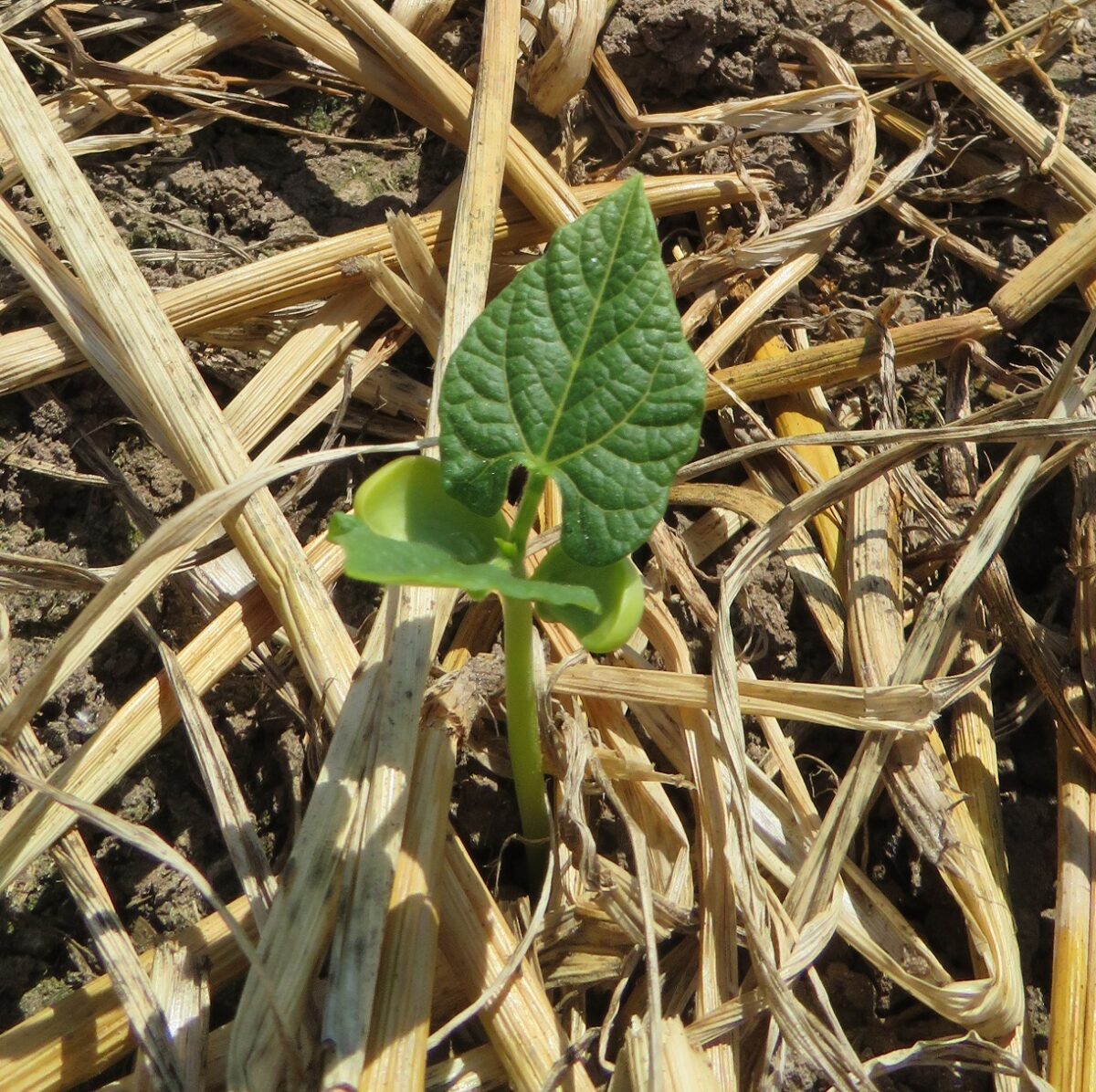Acres are limited, but dry beans are successfully grown in no-till systems in Ontario. Dry beans respond to some form of tillage in the seed zone at planting. This is largely because of their inherently small and poorly developed root system. Tillage coulters on the planting unit will provide the necessary seed-zone tillage to optimize emergence, stand establishment, early growth and plant height in no-till systems.
Beans are shorter when grown in a no-till system and are therefore better suited to narrow row production. Packing following planting is usually necessary where direct harvesting is planned and for dry edible beans planted no-till into corn stubble. Packing will level the field for clipping beans close to ground and reduce stones, cornstalks and contamination from dirt when combining.
The reduced amount of vegetative growth in no-till fields is thought to result in lower incidence of white mould.
There are very few published research results comparing tillage systems used in dry beans. Results from two Canadian studies are summarized below.
No-till vs Chisel Plow + Discing
In 1990-1991 a small plot trial was conducted at the Woodstock research station with seven white bean varieties grown under two tillage systems (Sandoval-Avila et al.). The plot area was no-till for 6 years prior to the trial, and the crop previous to dry beans was soybeans. No-till was compared to chisel ploughing followed by discing twice. Yield was not significantly different between the two tillage systems. In 1990, the average seed yield was 1780 kg/ha in chisel ploughed plots and 1760 kg/ ha in no-till plots. In 1991, seed yield was 1620 kg/ha in chisel ploughed plots and 1830 kg/ha in no-till plots.
The study included a similar trial conducted at the same site with two white bean cultivars grown on various row spacings under the same two tillage systems. In this trial, seed yields in 1990 were 2510 kg/ha in chisel ploughed plots and 2520 in no-till plots. In 1991, seed yield was 1860 kg/ha in chisel ploughed plots and 1990 in no-till plots. These trials did not evaluate the impact of soil type or crop rotation on dry bean performance in various tillage systems.
No-till vs Conventional Till in Alberta
Another field trial conducted over three years in Lethbridge and Lacombe, Alberta was published in 2007 (Blackshaw et al.). Dry beans were planted the year after flax, canola, barley, oat and field pea in a zero-till system (residues left on soil surface) or conventional tillage. In Lethbridge the soil was 37% sand, 30% silt, 33% clay with a pH of 8.0 and 3% organic matter. Conventional tillage at this site consisted of tillage with a field cultivator (5-cm-wide shovels) in October and with a cultivator (40-cm-wide shovels) in May (shortly before seeding) at a 10- to 12-cm depth. The soil at Lacombe was a 43% sand, 21% silt, 36% clay with a pH of 5.7 and 10% organic matter. Conventional tillage at this site consisted of tillage with a cultivator (5-cm-wide shovels) in October, with a double-disc in April, and with a cultivator (35-cm-wide shovels) shortly before seeding in May at a 10- to 12-cm depth. Small red beans were used in the trial at Lethbridge, and pinto beans were grown at Lacombe.
Dry bean emergence was delayed in one of six site years with no-till compared with conventional tillage but maturity date was not affected. Dry bean density was never lower with no-till, and was higher in a few instances. Flax was the only previous crop to negatively affect dry bean yield as volunteer flax was not adequately controlled with herbicide. Over all previous crop stubbles and years, dry bean yield was similar in both tillage systems. Dry bean yielded 2060 kg/ha with conventional tillage and 2110 kg/ha with no-till at Lethbridge. Lacombe yields were 1600 kg/ha with conventional tillage and 1710 kg/ha with no-till.
References:
Sandoval-Avila, D. M., Michaels, T. E., Murphy, S. D. and Swanton, C. J. 1994. Effect of tillage practice and planting pattern on performance of white bean (Phaseolus vulgaris L.) in Ontario. Can J. Plant Sci. 74: 801-805.
Blackshaw, R.E., Molnar, L. J., Clayton, G.W., Harker, K. N. and Entz, T. 2007. Dry Bean Production in Zero and Conventional Tillage. Agron. J. 99:122–126. doi:10.2134/agronj2006.0202
Agronomy Guide for Field Crops – Publication 811. 2020. Ontario Ministry of Agriculture, Food and Rural Affairs (OMAFRA).
